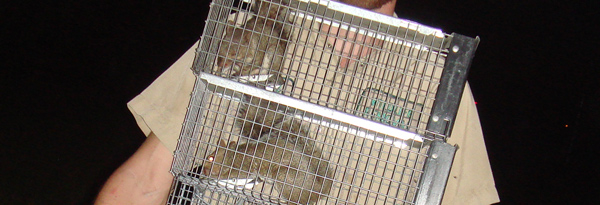- info@wildlife-removal.com
Call us for help in your town
Wildlife Removal Education
Squirrel Prevention Tips
Need squirrel removal in your hometown? We service over 500 USA locations! Click here to hire us in your town and check prices - updated for year 2020.
Squirrel pests are particularly difficult to control because of their persistence and their speedy, acrobatic movements. It is best for homeowners to nip this in the bud by taking preventive measure against the bushy-tailed animal. Squirrels can cause considerable damage to gardens and yards, roof and attics. They are excellent chewers and are notorious for chewing their way into buildings in a dogged manner, as they love being inside buildings. Once they gain entrance, they go on to create a mess with their constant gnawing on structures and fittings.

Squirrels constitute a huge nuisance for many homeowners, they can be heard chattering or squealing in the attic, or scurrying around and upturning things. They are not so hard to spot as they are active during the daytime, and some of their antics are:
- They take down bird feeders and steal birdseed
- They damage wood siding, soffits, roof boards, and exhaust fans
- They eat some garden plants and destroy others by scurrying around
- They dig up bulbs and vegetables in the garden
- Indoors, they make a mess in attics with their urine and droppings
- They chew on electric cables and insulation, creating a fire hazard
- They leave dirty tracks on your walls and surfaces
- They chew on wooden furniture
Squirrel Prevention in Gardens:
Although a seeming impossible task, squirrels can be dissuaded by making your garden less friendly and open to them.
1. Squirrels enjoy swinging from tree branches to wherever they’re headed. Make sure that no tree limb is hanging over your garden and trim all branches within several feet of the garden.
2. Install the kind of fencing that can keep squirrels out, use materials that they cannot climb or squeeze through its holes. Good examples are plastic or wire mesh fencing that hurt squirrel paws.
3. Purchase squirrel baffles and install on your bird feeders to stop squirrels from stealing bird seed. Once they discover a food source, in your yard, they’ll just keep on visiting.
4. If it is possible with your garden size, you may build a makeshift mesh lid to cover the garden that you can put on and off as needed. This is an expensive solution though.
Squirrel Prevention In Houses:
Basically, you need to ensure that there is no opening through which squirrels can enter the house. Read more in my 10-step guide for How to Get Rid of Squirrels, but mostly the below.
Do a thorough inspection of your property and identify any opening that leads into the attic and walls; check out the vents, wood and roof joints, and the likes.
- Note gaps and weak, rotten wood from the exterior
- Climb into the attic and note gaps through which light enters as potential entry points
- Seal up all identified gaps and replace rotten wood as squirrels can easily chew through them
- Seal up attic vents with hardware cloth as mesh cloths cannot keep squirrels out. Secure with staple gun and screws.
- Trim the limbs of all trees and branches within six to eight feet of your house, this is within jumping distance for a squirrel.
Prevent squirrels from climbing a nearby tree by fastening a 2-feet metal sheet around its trunk about 7 feet above the ground. Fasten with springs to allow the metal to expand as the tree grows.
Spray a good repellent over sealed openings and cover as much space as possible
Purchase a good steel chimney cap, and install it snugly to cover the top of your chimney. The warmth
Squirrel Repellents
Liquid and granular squirrel repellents are available in stores. In actual fact, repellents rarely get the job done and there is no proven one, but those that contain the active ingredient – Capsaicin, are more likely to be effective. They need to be applied and re-applied with the recommended consistency. The liquid repellents are sprayed on surfaces, bird feeders, roofing, trash cans, flowers, and even trees, to discourage squirrels from chewing or digging.
Sprinkle granular repellents on flowerbeds, crawl spaces, tree bases, attics, around gardens and house perimeters. The granules are suitable for indoor use in temperatures below 40 degrees.
You can also make your own homemade repellant quite easily by combining hot pepper sauce with water at a ratio of 1 tablespoon of sauce to 1 quart water.
Go back to the Squirrel Removal page.


















